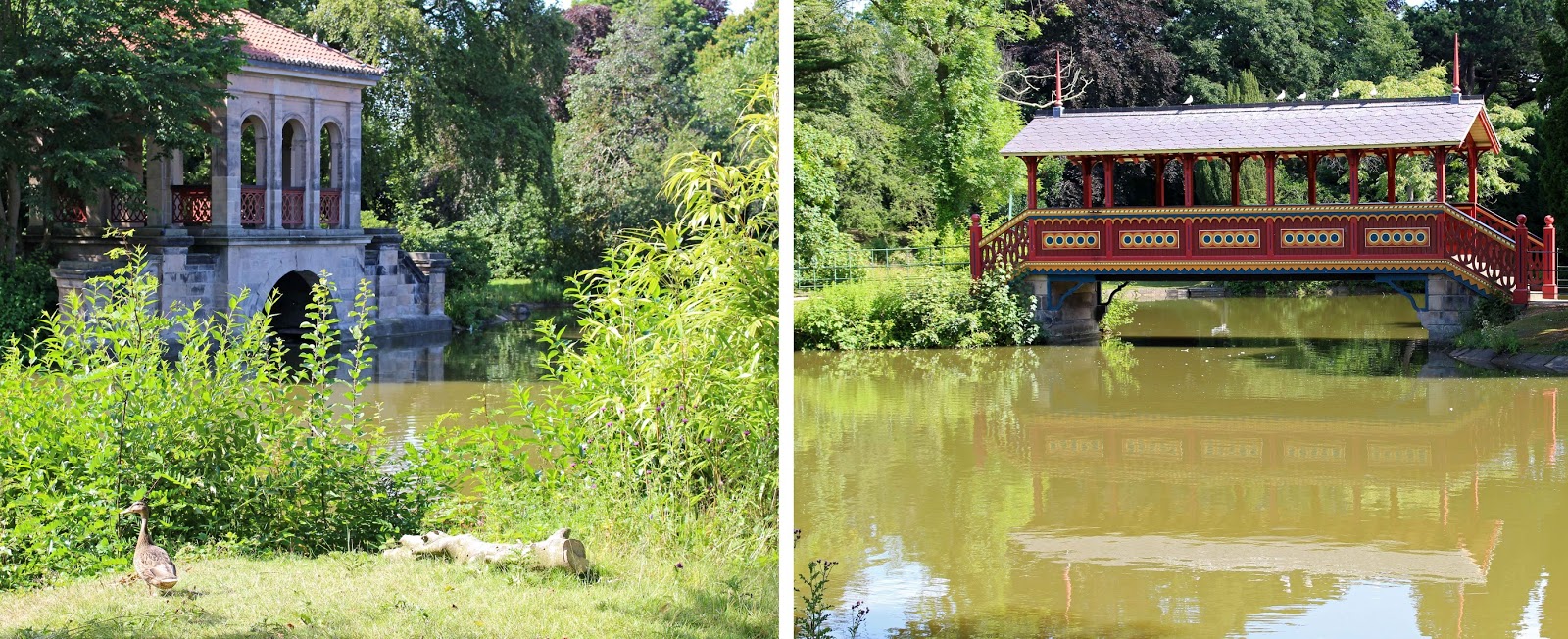You
name it, we did it: from a historical industrial township and local art gallery
jam-packed with treasures to bird-filled parks and a beautiful beach, a day on
the Wirral peninsula can provide a wonderful combination of culture and nature.
And if you’re not sure what/where the Wirral is, well, it’s that rectangular
peninsula of land that sits on England ’s
north-west coast between Wales
and the River Dee on the southern side and the River Mersey and the city of Liverpool
First
stop today was Port Sunlight, one of the finest surviving industrial
villages in the UK village
of Port Sunlight
What
makes Port Sunlight unique is the way in which the social goals and romantic
ideals on which the village was founded and developed have been so successfully
integrated into the architecture, landscape and layout of the village. Lever
collaborated with over 30 architects in the creation of the village.
The
main influence was the regional vernacular of Cheshire and Lancashire, which
provided a wide range of styles and features to draw on, from virtually every
period of architectural history – meaning there are black-and-white
half-timbered houses, some amazing brickwork, tall spiralling chimneys, pretty
stucco decoration, interesting window designs and glasswork with Art Deco
patterns, sculptural details like gargoyles and carved heads, and black-painted
ornately carved gable-ends. The inhabitants are obviously still proud to live
in the village as many houses have pretty gardens and colourful hanging flower
baskets.
As well
as the houses, there are a hotel that used to be a cottage hospital, a school, and
a church; the Bridge Inn and the Gladstone Theatre; a small museum; a couple of
tearooms; a dell – a park where a stream once ran; and the Port Sunlight war
memorial, one of the largest in the UK, unveiled in 1921 and now listing the
names of Lever employees killed in both world wars.
Art
was another of Lever’s passions. He used his enormous wealth to bring together
an outstanding collection of artworks and built the Lady Lever Gallery to give
everyone the chance to see and be inspired by it. The Gallery has one of the
finest collections of sculpture in Britain
We
lunched in the gallery’s café before heading further along the Wirral, to
Birkenhead Park, originally designed by Joseph Paxton and an
early model for public parks in other cities, including New
York ’s Central Park . To be
honest, I thought it a fairly ordinary park when compared, for example, to
Auckland’s Domain but we took a turn around the lake to
see a couple of bridges and the pavilion. Of course, what Auckland Canada
Onwards
once more, and next was a short stop for a walk around the red sandstone rocks
and flowering heather at Thurstaston Nature Reserve, before continuing at a
slow crawl through the township of Hoylake – slow, because the town is home to
the Royal Liverpool Golf Club where the British Open Championship was to be
held later that week, and this was a practice day, meaning hordes of people had
flocked to the town to watch some of the world’s best golfers do their swing
thing.
 |
| The fort at New Brighton, with Liverpool in the background |
Our
last stop of the day was at New Brighton , right
at the end of the Wirral peninsula, with the Irish Sea
on one side and the mouth of the River Mersey on the other. We parked and
walked along the rather bland and featureless prom to Fort Perch Rock and the lighthouse.
There are large numbers of wind turbines off the coast here – still an unusual
sight for me – and there are two much closer, on the opposite side of the
river, on the outskirts of Liverpool .
After a
walk on the sands, dipping my toes into the river waters and taking a ton of
photos, we settled in one of the cafés overlooking the town's marine lake and enjoyed a
delicious icecream in the gorgeous twilight – the perfect way to enjoy the long,
summer evening and to round off another great day out.

.JPG)
.JPG)
.JPG)
.JPG)
.JPG)
.JPG)

.JPG)


No comments:
Post a Comment